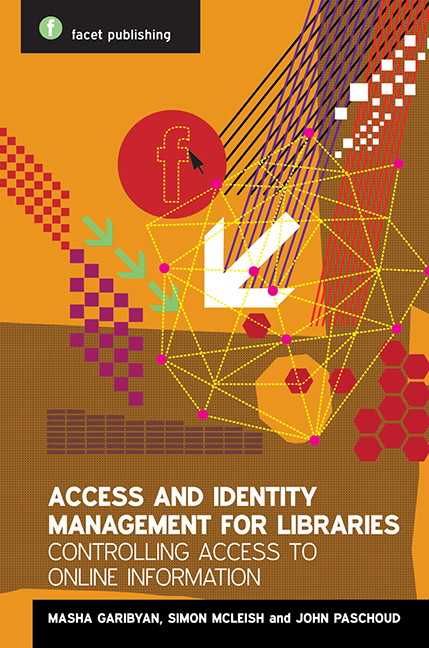Book contents
- Frontmatter
- Contents
- Foreword
- Acknowledgements
- Note to readers
- Glossary
- 1 What is access management, and why do libraries do it?
- 2 Electronic resources: public and not so public
- 3 Principles and definitions of identity and access management
- 4 Current access management technologies
- 5 Authentication technologies
- 6 Authorization based on physical location: how does the internet know where I am?
- 7 Authorization based on user identity or affiliation with a library: who you are? Or what you do?
- 8 Federated access: history, current position and future developments
- 9 How to choose access management and identity management products and services
- 10 Internet access provided by (or in) libraries
- 11 Library statistics
- 12 The business case for libraries
- Afterword
- Appendix 1 Case studies
- Appendix 2 A White Paper on Authentication and Access Management Issues in Cross-organizational Use of Networked Information Resources
- Index
11 - Library statistics
Published online by Cambridge University Press: 10 September 2022
- Frontmatter
- Contents
- Foreword
- Acknowledgements
- Note to readers
- Glossary
- 1 What is access management, and why do libraries do it?
- 2 Electronic resources: public and not so public
- 3 Principles and definitions of identity and access management
- 4 Current access management technologies
- 5 Authentication technologies
- 6 Authorization based on physical location: how does the internet know where I am?
- 7 Authorization based on user identity or affiliation with a library: who you are? Or what you do?
- 8 Federated access: history, current position and future developments
- 9 How to choose access management and identity management products and services
- 10 Internet access provided by (or in) libraries
- 11 Library statistics
- 12 The business case for libraries
- Afterword
- Appendix 1 Case studies
- Appendix 2 A White Paper on Authentication and Access Management Issues in Cross-organizational Use of Networked Information Resources
- Index
Summary
Licensed electronic content accounts for a significant proportion of many libraries’ budgets. It is therefore important that libraries are able to collect and analyse reliable and meaningful e-resource usage data in order to guide their future decision making. This chapter looks at why and how libraries collect usage data, and some important developments designed to make the process easier.
Why libraries collect electronic resource usage statistics
For many libraries around the world licensed electronic resources account for a significant proportion of the library budget. In order for libraries to be able to make informed decisions about how that budget is spent, they need to have a good idea of how much their e-resources are being used and what user groups are making use of them (Lynch, 1998, 10). This is equally true of resources licensed to a single library or a resource-sharing consortium.
Some libraries have devolved budgets, where if a particular resource is only used by one department, that department has to pay for the resource even though it is provided by the library. Resources that are used across many departments are paid for centrally. So it's important for libraries to know which resources they should be paying for and which should be paid for by another department. Academic libraries are often funded as a top slice of the institution's budget, before it is divided up between departments, so centrally paid-for resources take a proportion of the budget of every department, even though some departments may not actually be making use of these resources; not to mention that some resources may, in fact, be of interest to multiple departments but are only being used by one department due to poor resource promotion by the library.
Just as with print resources, librarians need quality usage data for eresources to guide their collection decision making. E-resource usage statistics offer great potential. In the past, librarians had to guess how much an index or journal (both types of material which are important e-resources today) might be used, or undertake a slow and time-consuming shelving study in order to obtain journal usage data (Duy and Vaughan, 2003, 16). With electronic resources, usage data can often be obtained automatically and offer much more detailed information about how a resource or product is being used, when and by whom.
- Type
- Chapter
- Information
- Access and Identity Management for LibrariesControlling Access to Online Information, pp. 127 - 138Publisher: FacetPrint publication year: 2014



